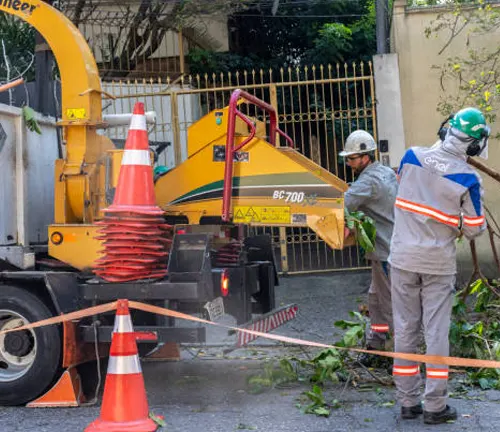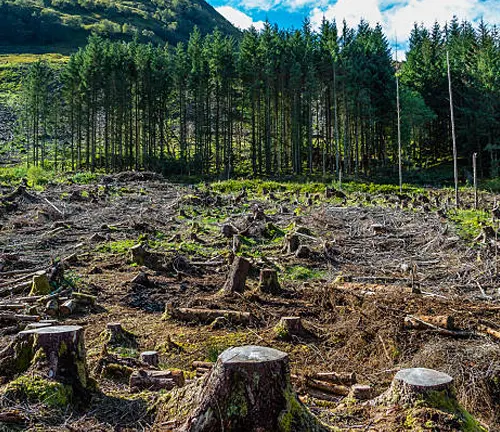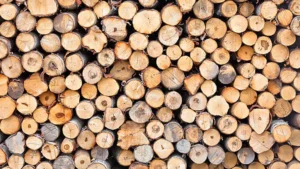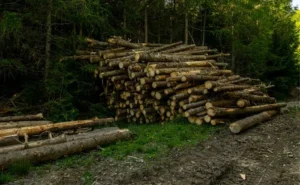Timber Sales Preparation: Planning a Successful Timber Sale
- September 17, 2024
- 0 comment
Selling timber can be a significant revenue source for landowners, but the process of timber sales preparation requires careful planning and expertise. Ensuring that you maximize both the financial and environmental benefits of your timber sales means preparing well ahead of the harvest. From understanding market trends to ensuring compliance with legal regulations, the preparation phase is crucial to a successful timber sale.

This article will guide you through every important steps in preparing for a timber sale, offering insights into key areas that will help you navigate this complex process effectively.
Timber Sales Preparations
1. Timber Inventory
The first critical step in timber sales preparation is conducting a timber inventory. This is an assessment of the types and quantities of trees available for harvest on your land.
A timber inventory helps to identify the species, size, and volume of the trees. This is important for determining the market value of the timber and for negotiating with potential buyers.

A professional forester can assist with this process by providing an accurate estimate of your timber’s worth, which can prevent underselling and help you plan sustainable harvests for future timber sales.
2. Hiring a Professional Forester
While some landowners may feel confident handling their own timber sales, hiring a professional forester is often the best option. A forester provides valuable expertise in managing timber resources and maximizing profits.
They can assist with tree identification, forest health assessments, and market insights. Foresters also understand the best harvesting techniques and can create a management plan that promotes the long-term sustainability of your forest.

Additionally, foresters help ensure compliance with local laws and environmental regulations, protecting you from potential legal and ecological issues down the road.
3, Determining Timber Market Conditions
Before finalizing any sale, it is crucial to assess current timber market conditions. Timber prices fluctuate based on demand, species, and the local economy. Some factors influencing timber prices include:
- Species demand: Certain species like hardwoods or pines may be in higher demand based on regional uses.
- Market timing: The time of year can affect timber prices. For instance, prices tend to be higher when the demand for construction materials is at its peak.
- Log size and quality: Larger and healthier logs fetch higher prices than smaller, lower-grade ones.
Understanding these dynamics ensures that you sell your timber at the right time, maximizing your financial return.
4. Selecting the Right Harvesting Method
Choosing the appropriate harvesting method is another vital step in timber sales preparation. There are three main types of timber harvesting techniques:
Clearcutting
This involves removing all trees in an area. It’s often used when the goal is to regenerate new growth, though it can have negative impacts on wildlife and soil if not managed properly.

Selective cutting
This is a more sustainable method, involving the removal of specific trees based on size, health, or species. Selective cutting preserves the forest’s structure and promotes long-term growth.

Shelterwood cutting:
This technique removes mature trees in stages, allowing new growth to establish before additional trees are harvested. It’s often used for regenerating certain tree species that thrive under partial shade.
Selecting the right method depends on the landowner’s goals, the type of forest, and the condition of the trees. Working with a forester can help landowners choose the best approach to maximize their revenue while maintaining the health of the forest.
5. Understanding Timber Sale Contracts
A timber sale contract is a legally binding document between the landowner and the buyer. It outlines the terms of the sale, including the price, harvest methods, timeline, and other critical details. Having a well-drafted contract is essential to protect your rights and ensure that the buyer meets their obligations.
Important elements to include in a timber sale contract are:
- Payment terms: Whether the sale is lump-sum or pay-as-cut.
- Harvest specifications: Detailing which trees can be cut and what method should be used.
- Liability clauses: Addressing issues of damage, responsibility for accidents, and insurance requirements.
- Environmental protections: Ensuring compliance with local environmental regulations to protect the land from excessive damage.
A forester or legal expert can help draft or review the contract to ensure that all necessary protections are in place.
6. Environmental and Legal Considerations
Timber sales are subject to environmental laws and regulations, which vary depending on the location of the sale. These laws are designed to protect natural resources, wildlife, and water systems. It is essential to be familiar with the following considerations:
Best Management Practices (BMPs)
These are guidelines aimed at minimizing the environmental impact of timber harvesting, such as controlling erosion and protecting water quality.
Endangered Species Laws
Certain species or habitats may require special considerations during the harvesting process.
Zoning and land-use regulation
Some areas have specific rules governing when and how timber can be harvested.
Failing to comply with these regulations can result in fines, legal action, or damage to the forest ecosystem.
7. Choosing a Timber Buyer
Selecting a reliable timber buyer is another crucial step in the sales preparation process. Timber buyers range from small-scale logging operations to large forestry companies. To ensure you receive a fair price, it’s important to shop around and gather multiple offers.
- Reputation: Research the buyer’s track record and get references from other landowners.
- Payment terms: Understand how and when the buyer will pay for the timber.
- Equipment and expertise: Ensure that the buyer has the proper equipment and skills to harvest the timber in a way that aligns with your goals.
Contract negotiation: Work with the buyer to finalize the terms in the timber sale contract.
A professional forester can help you find reputable buyers and negotiate favorable terms.
8. Managing Forest Roads and Access
Proper planning for forest roads and access to the timber is essential for a successful sale. Access roads allow logging equipment to reach the harvest site and transport the timber efficiently. If roads are poorly constructed, they can lead to soil erosion, water pollution, and damage to the forest ecosystem.

Planning access roads involves:
- Minimizing environmental impact: Roads should be placed in areas that minimize damage to the soil and water systems.
- Ensuring durability: Roads need to be built to withstand heavy logging equipment without causing long-term damage.
- Maintenance: Proper road maintenance ensures that the land remains accessible and usable after the sale.
Foresters and logging professionals can assist in designing and maintaining forest roads to minimize environmental impact.
9. Post-Harvest Considerations
After the timber is harvested, there are several important post-harvest considerations. The goal is to restore the forest’s health and prepare it for future growth. This includes:
Replanting
Depending on the harvesting method, replanting may be necessary to promote forest regeneration.
Wildlife habitat restoration
Ensuring that the forest provides adequate habitat for wildlife is crucial for maintaining biodiversity.
Erosion control
Proper soil management prevents erosion and maintains the health of the land.
By taking steps to restore the forest after a sale, landowners can ensure that it remains healthy and productive for future generations.
10. Financial Considerations and Tax Implications
Selling timber has significant financial and tax implications. Income from timber sales is usually considered a capital gain, but the tax treatment can vary based on factors such as how long the land has been owned and the landowner’s involvement in managing the forest.
Timber basis
This refers to the value of the timber when it was first acquired. It’s essential for calculating capital gains.
Deductions
Some costs, such as timber sale preparation expenses, can be deducted from taxable income.
Consulting with a tax professional who specializes in timber sales can help you navigate the complexities of taxation and maximize your financial benefits.
Conclusion
Timber sales preparation is a multi-faceted process that requires careful planning, market research, and collaboration with professionals to ensure a successful outcome. From conducting a timber inventory to choosing the right harvesting methods, every decision impacts both the financial return and the sustainability of the forest.
Engaging a professional forester can be invaluable, providing expertise in navigating market conditions, legal regulations, and forest management techniques.
Frequently Asked Questions (FAQ’s)
- What is timber sale preparation?
Timber sale preparation is the process of planning, marking, and organizing the sale of trees from a forested area to ensure a successful and sustainable harvest. - Why is planning important for a timber sale?
Planning helps maximize profits, ensure sustainability, and prevent damage to the forest ecosystem during the timber harvest. - What factors should I consider when planning a timber sale?
Consider the timber quality, market conditions, harvest timing, legal requirements, and environmental impact. - How do I estimate the value of my timber?
Timber value depends on the type, size, and quality of the trees, as well as current market conditions. A professional forester can help with the appraisal. - Do I need a professional forester to help with the timber sale?
Yes, hiring a professional forester can help ensure that the sale is well-managed, environmentally responsible, and financially beneficial. - What are the common legal requirements for timber sales?
Legal requirements vary by region but often include permits, contracts, and compliance with environmental regulations. - How do I find a buyer for my timber?
You can work with a forester to find potential buyers or auction the timber. Networking with local mills or logging companies can also help. - What should be included in a timber sale contract?
A timber sale contract should cover price, payment terms, harvest methods, and conditions to protect your land from damage. - How long does the timber sale process take?
The entire process, from preparation to final sale, can take several months to over a year, depending on market conditions and forest size. - What is the best time of year for a timber sale?
The best time depends on the local climate and market. In many areas, winter or dry months are ideal to minimize ground disturbance.

Jordan Blake
Forestry AuthorJordan Blake is a forestry expert with over 15 years of experience in arboriculture and community education. Passionate about sustainable forest management, Jordan regularly writes for Forestry.com and Tree Care Magazine. Holding certifications in tree health assessments and urban forestry management, Jordan conducts workshops to educate the public on sustainable practices. Jordan has a degree in Environmental Science and enjoys hiking and photography in their free time.













Leave your comment